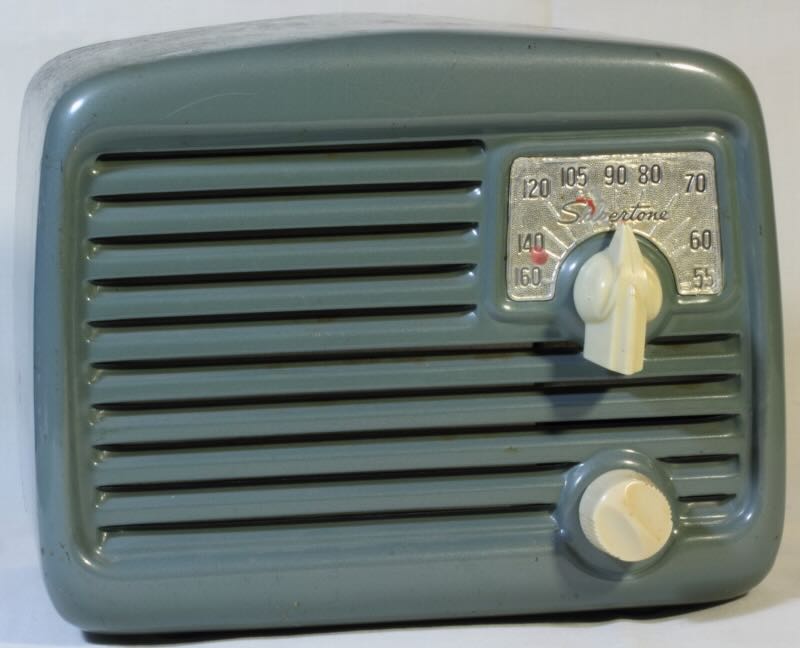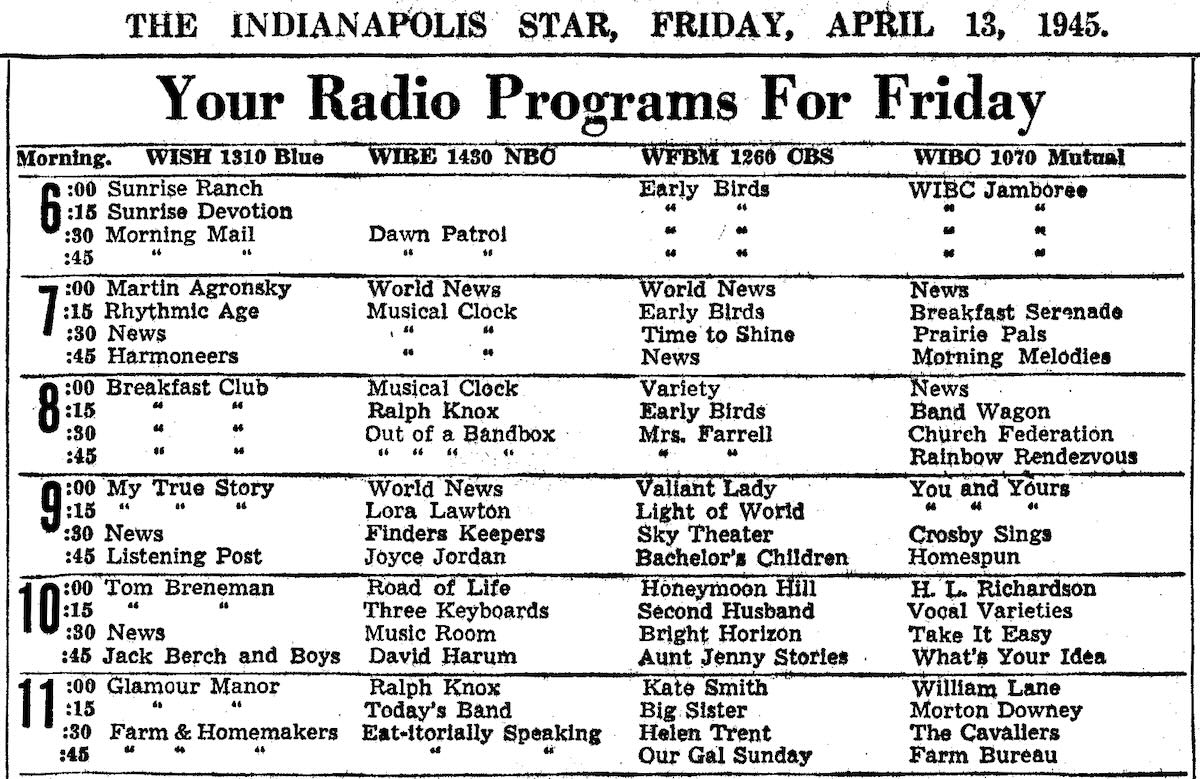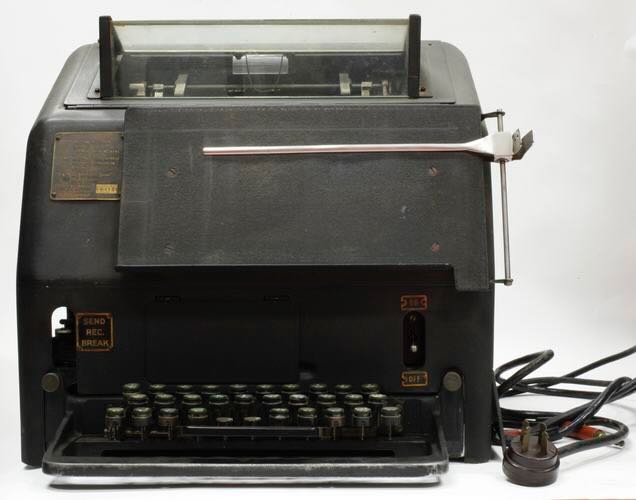Many thanks to SWLing Post contributor, Bob Colegrove, who shares the following guest post:
My Very First Radio
Sears and Roebuck Co., Silvertone, Catalog No. 8003, Model No. 132.818-1
I don’t remember much from 1949. I was seven years old and still in the first grade. I do remember being gifted a radio by my mom and dad on my birthday. It was a Sears and Roebuck Co., Silvertone, Catalog No. 8003, Model No. 132.818-1. I don’t really remember asking for it. I’m sure mom and dad did not have a clue as to how consumed I would become with radio over my lifetime. In truth, this was not the radio that got me totally absorbed, rather that function would be filled in 1958 by the Howard Radio Co. Model 308 combination MW/SW radio-phonograph console which had been relegated to the basement in favor of the TV set.
In 1949 television was on the cusp of success, and AM radio was still the one-way Internet of its time. I recall my mother listening to countless soap operas during the afternoon. The Howard was still in the living room and we listened to all the popular programs at night. Anyway, the Silvertone was mine. It took up residence in my room and I could independently explore the wonder of five local stations broadcasting in Indianapolis at that time. There were no parental guidance settings on the Silvertone, nor was there any need.
The Silvertone was not a world-class radio with all the sensitivity, bells and whistles I would later desire. Below WXLW, 950 kc it was deaf. It was, in fact, one tube short of an “All American Five.” However, one of its four tubes was dual function, if you counted the detector. It was what was called an “ac-dc” radio. This meant it could be powered by either 110 Vac or Vdc. Granted, there were a couple communities in the US which were still serviced by dc power at this late date, but that fact certainly did not warrant advertising. The whole thing always seemed to me no more than a marketing ploy on the part of manufacturers to cover for the lack of an expensive isolation transformer in the circuit. Given the fact that electrical standards of the time did not provide for polarized outlets and power cords, these things could be quite hot, and it’s amazing so many tinkers, myself included, are around to talk about it.
One Tube Short of an “All American Five”
The dial was very crude, and the tiny tuning knob swept all 107 available channels in a 180-degree twist of the variable condenser. My mom, always handy with a paint brush, took to marking favorite stations with a dab of nail polish. 1430 kc was WIRE and 1070 kc was WIBC. Perhaps she got the idea from Bill Halligan who used little red dots on the controls to indicate the setting that would likely produce some noise.
The printed media were sizeable and substantive in the 1940s. The Indianapolis Star’s morning edition for Friday, April 13, 1945 was particularly mournful as the U.S. woke up to the news that the president had died the day before. I was later given to understand that many stations broke from the normal schedule for a few days to play somber music. Notwithstanding, the first section still bore the quintessential hourly radio program schedule from 6 am to midnight for each of the four local stations. We always kept clippings of station logs for each day of the week.
My interest in baseball grew over the next couple years, and the Silvertone played an important role in my keeping up with the local AAA team. The static on a summer night was atrocious. Further, in those days, the broadcasters were not compelled to fill the air with chatter between pitches. There were no recitations of mindless statistics and no color commentators to describe the nuances of sliders and curve balls. Consequently, between pitches there were often long pauses of nothing but dead air. If you happened to tune in during a pause you had little idea where WISH, 1310 kc was on a hopelessly crude dial.
Most minor league broadcasters did not travel with the team. When the team went on the road, they used an old Model 15 clickety-clack Teletype machine in the studio. A local guy at the distant ballpark would observe a pitch or play, and quickly type a cryptic message on his Teletype. On the radio you would first hear the receiving Teletype spring to life in the studio as the message came in. The announcer would quickly interpret it, and then embellish the play with some excitement as best he could.
Teletype Model 15
Copyright Museums Victoria (Licensed as Attribution 4.0 International
https://creativecommons.org/licenses/by/4.0/)
During those times, it was not too uncommon for the Teletype to suddenly go down during the game. What to do? An announcer was suddenly left to his own creativity to fill in airtime. Possible solutions were to describe the lengthy process of extricating a stray animal from the field, or a sudden cloudburst and consequential rain delay. An intrepid announcer went on as nothing happened, making up the play-by-play over the interval. Invariably, when the Teletype came back up, he found himself not quite in sync with the game and possibly a few runs behind. At that point the challenge was to patch in the necessary play and go on to complete the game to the satisfaction of an otherwise unsuspecting audience.
Well, after 73 years, I’ve seen my share of radios. In the meantime, the Internet has made it possible to DX the entire world at any time on a fifty-dollar Kindle – excellent fidelity, no interference, no noise, no fading. But, after all these years, I still cherish those static-filled ballgames and teletype machines heard on the Silvertone a long time ago.
Quietly Waiting for the Next Pitch






The local station that carried our local minor league road games back in the 50s used a sneaky method to add sound effects as if the announcers were there. They strung a baseball bat vertically next to the announcer. When the teletype said there was a hit, the announcer would hit the bat with a pencil I believe. It sounded just like the ball being hit by the bat. They also had some early version of a tape recorder and used it to record the normal sounds of the game previously when it was local. When the team went on the road, every 5 or more minutes, you’d hear the same kid come by yelling “peanuts, popcorn, and cracker jacks”. There were loud crowd noises when there was a double, triple, or a home run. And the thump when a foul ball hit the announcer’s booth roof. They probably did the same thing as a previous writer mentioned when there was a disruption of the feed from the remote location, i.e., rain delay, player injury, etc. Ah, the good old days.
I still have a working Sanyo clock radio l bought in 1977 while stationed in San Diego. Very reliable,has outlasted all the other ones. 46yrs and still going strong.
Outstanding ! Pleasurable trip down memory lane,great story thanks My uncle bought a “Channel Master” portable with am,fm and shortwave around 1959 – 1960,it was the first time that I heard shortwave,little did I know back then that it was the hay-day of international broadcasters and their cold war propaganda.Thanks,again !
This is Jack,bum scoop jack the channel master did not have FM just MW/Shortwave some models back then had MW and Marine boating freq. and they were actually made by Sanyo in Japan
If it uses a two section tube, it’s probably a full AA5.
It wasn’t marketing. When AA5s rose up, there may have still been DC in some places. But it did away with a power transformer. So it cut costs, and made the radio lighter, which meant a move to bakelite rather than wooden cabinets. Radios had been expensive, AA5s widened the market.
It likely reflects the changing radio industry. As broadcasting started up, you might be tuning distant stations, so the need for better specs. But as it changed to more radio stations, you’d be tuning local stations. No need for a DX machine.
Ah! We had a Hallicrafters 35 as the house radio in the kitchen on a shelf beside the sink.
Woe betide you if you leaned on the sink while tuning the radio as there is a shock of the body of the radio through the body to the sink,
As children we got “rocket radios” single diode “crystal radios” with an alligator clip to crtain rod an either a screw or slide tuning rod into the tuning coil inside the rocket.
Thanks for the trip down memory lane Bob. I always enjoy reading about how people first got interested in radio as a hobby. My first radio was a GE AM/FM clock radio (https://www.radiomuseum.org/r/general_el_c_403g.html) that my parents had used in the kitchen. I didn’t use nail polish like your Mom but did use a pencil to mark where stations could be found. After learning about QSL cards from Popular Electronics magazine, I used the GE to get my first QSL from WCKY, Cincinnati, OH in 1965. That led to an interest in shortwave which lasts to this day.
Great nostalgia! I too remember (and long for now!) those days when baseball games were not filled with chatter. I had not listened to a game in 20 years or so until a few years ago, and the change was practically sickening. Haven’t listened to another game since!
I also miss the days of real newspapers with useful information like radio schedules and chess games, but I am fast becoming an old curmudgeon!
Cheers! Robert